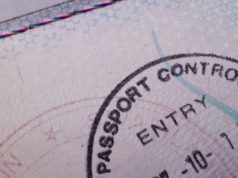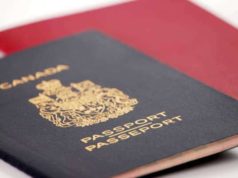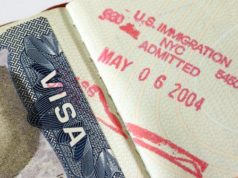
Understanding the Fiancé Visa
If you’re a U.S. citizen who is engaged to a foreign national and planning to get married, you may be eligible for a fiancé visa. The fiancé visa, officially known as the K-1 visa, allows your fiancé to enter the United States for a period of 90 days, during which time you must get married.
This guide will provide an overview of the fiancé visa, including the eligibility requirements, the application process, and what to expect during the visa interview.
Eligibility Requirements for the Fiancé Visa
To be eligible for a fiancé visa, the following requirements must be met:
1. Both you and your fiancé must be legally free to marry.
2. You must have met your fiancé in person within the last two years.
3. You and your fiancé must intend to marry within 90 days of your fiancé’s arrival in the United States.
4. Your fiancé must be admissible to the United States, meaning they don’t have a criminal record or pose a security risk.
Application Process for the Fiancé Visa
To apply for a fiancé visa, you must complete the following steps:
1. File a Form I-129F, Petition for Alien Fiancé(e), with U.S. Citizenship and Immigration Services (USCIS).
2. USCIS will process your petition and, if approved, forward it to the National Visa Center (NVC).
3. The NVC will send your petition to the U.S. embassy or consulate in your fiancé’s home country.
4. Your fiancé will be invited to the embassy or consulate for a visa interview, during which they will be asked questions to determine their eligibility for the fiancé visa.
5. If the visa is approved, your fiancé will receive their passport with the K-1 visa, allowing them to travel to the United States and get married within 90 days.
What to Expect During the Fiancé Visa Interview
During the visa interview, your fiancé will be asked questions about their background, their relationship with you, and their plans for marriage. It’s important to be honest and provide accurate information during the interview, as any inconsistencies or misrepresentations could result in the visa being denied.
Your fiancé will also need to provide various documents, such as a valid passport, birth certificate, police certificate, and evidence of your relationship, such as photos, emails, and letters.
Conclusion: A Path to Marriage for Foreign Fiancés
The fiancé visa provides a path for U.S. citizens to bring their foreign fiancés to the United States for the purpose of getting married. While the application process can be lengthy and complicated, it’s worth it for couples who want to start their lives together in the United States.
By following the eligibility requirements, completing the application process, and preparing for the visa interview, you can increase your chances of a successful fiancé visa application and a smooth transition to married life in the United States.
What is a Fiancé Visa?
In order for an individual who is not a citizen of the United States to be legally able to participate in a legally-recognized marriage to a citizen of the United States, a variety of documentation, forms, applications and petitions exist for completion; without the expressed permission of the United States Citizenship and Immigration Services Bureau with regard to legal entry via a fiancé visa, a legal marriage cannot take place – the following forms may be required depending on the nature of the applicable fiancé visa:
Petition for Alien Fiancé (I-129F): This form must be completed in order to determine the Fiancé Visastatusof non-citizen spouses; depending on who is eligible to be a claimant on this form, the Fiancé Visa status(s) of any children resulting from the marriage will and can vary
K-1 Fiancé Visa: A K-1 Fiancé Visa allows a non-citizen spouse of a citizen of the United States to legally remain in the United States for 90 days; in this time, the couple is expected to be married
K-2 Fiancé Visa: A K-2 Fiancé Visa is awarded to unmarried children under the age(s) of 21 produced by the marriage of a citizen of the United States and a non-citizen; children must be claimed on the K-1 Fiancé Visa belonging to the non-citizen in order to be awarded K-2 Fiancé Visas
K-3 Fiancé Visa: A K-3 Fiancé Visa allows for an immigrant to legally remain within the United States on a temporary basis – a K-3 Visa is issued to individuals who are non-citizens, married, and/or above the age of 21
K-4 Fiancé Visa: A K-4 Fiancé Visa is a temporary visa awarded to unmarried children under the age of 21, which provides the same rights as a K-3 Fiancé Visa
I-485 (Adjustment of Status Application): The adjustment of status application form changes the temporary legal status of a non-citizen to legal and permanent residential status
G-325A(Background and Biographic Information): This form must be completed by all individuals petitioning for permanent residence; this form serves as a background check for any non-citizen who wishes to enter the United States – this background check must be completed regardless of the duration of the visit or residence
Expressed Permission Granted by a Fiancé Visa
A K-1 Visa allows a non-citizen spouse 90 days to legally enter the United States in order to be married. Once an application for the adjustment of status is completed,the non-citizen will be able to enjoy legal, permanent residence – this application is a legal declarationrecognizing the marriage between a foreign-born individual without legal residence and an American citizen. However, the following stipulations apply to unmarried children under the ages of 21:
Unmarried children under the age(s) of 21receive a year-long K-2 resident status in the event that they are claimed on the K-1 Visa belonging to the non-citizen spouse(s)
Children who have received K-2 Visas must file for an adjustment of status prior to that year’s end





























